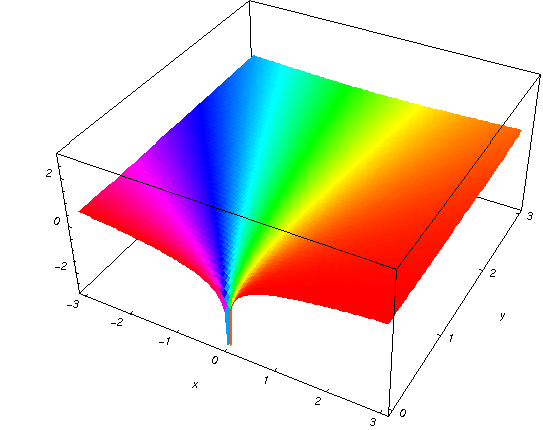When we say first principles, we claim we are going down to the basics. To a fundamental truth. Being totally iterative, methodical and without prejudice. We are arriving at a fundamental principle. Scientists are not supposed to assume anything until they arrive at a first principles truth. Can we be sure that we have arrived at the core of a mathematical argument or a behaviour analysis? Can we plot that behaviour according to the fundamental first principles? Can we dig deeper until we arrive at a foundational truth? As Descartes suggested, we have to doubt till we reach that truth.
When it comes to first principles the core axiomatic belief – the basic assumption that cannot be deduced any further – becomes paramount. Several centuries ago, Aristotle defined a first principle as “the first basis from which a thing is known.” A similar tenet in engineering physics is illustrated in the following equation:”
The derivative of square root ( √ ) of a function is considered a first principle. The basis, not the results derived from it. The fact that 92 is 81, or that the square root of 81 is 9, is not a first principle. Basic science analysis requires going to the root cause and not the results, symptoms, or behaviour. The latter would amount to a clinical study.
Scientists keep asking the question “why” until they reach the indubitable truth. What does the “truth” look like? Can we represent the truth visually? How would it look? We can offer an example, as it has been possible for several decades to represent a fundamental functionality based on a surface plot in 3-dimensional axes.
Here is a rather neat representation of the square root function in a 3D plot. Thanks to this site, however distant we are from mathematics, we can grasp that there is a first principle that governs variables and their behaviour. Every tweaking results in an aesthetic representation of the order. Taking one of the plots as an example:
Zero-pole plot
The author states the following: “The logarithm of the absolute value of √z where z = x + i y in the upper half‐plane. The surface is colored according to the square of the argument. In this plot, zeros are easily visible as spikes extending downwards and poles and logarithmic singularities as spikes extending upwards. The square root branch point, that also is a zero at Z = 0 is visible.”
This is not about surfaces and neat colours. It is about our ability to represent certain truths – not all – at the present time, with fundamental behaviour patterns that are extraordinarily aesthetic.
Forming ideas and holding on to opinions
Going further, how do we form our ideas? How do we develop our opinions and affiliations? Who teaches us or makes us aware or lays the seeds in our brains about what is right and what is wrong? Are we simply impressed and attracted by the charisma of individuals and their writings or personalities at a formative period in our lives? Are we convinced by aesthetics or rectilinear logic, or simultaneously by both? Can form-fit-functionality (as understood in the engineering sciences) be an unconscious urge toward order, or is it an optimized comfort zone? Are the first principles in physics and mathematics convergent with first principles in philosophy? Or are they the same?
And, for that matter, at a more advanced stage in our lives, do we cling to our beliefs, ideas and affiliations out of obstinacy, egotism or plain laziness? Are we branded for life for our beliefs and opinions, or do we have an epiphanic transformation – à la Francis Fukuyama – later on?
BTW, Fukuyama, a leading proponent of neocon politics and author of the document The End of History, asserted that a civilization based on Western concepts of a free market economy had finally triumphed over socialistic ideas, with the fall of the Berlin Wall. His book became a Bible for Cheney, Bush, Perle, Wolfowitz and a whole list of neocon philosophers and believers in military domination of the world. But recently Fukuyama has dramatically reversed some of his opinions, distancing himself from a few of the neocons he had associated with, and has reconsidered some of his beliefs.
According to Wikipedia:
“In a 2018 interview with New Statesman, when asked about his views on the resurgence of socialist politics in the United States and Great Britain, he responded:
It all depends on what you mean by socialism. Ownership of the means of production – except in areas where it’s clearly called for, like public utilities – I don’t think that’s going to work. If you mean redistributive programmes that try to redress this big imbalance in both incomes and wealth that has emerged then, yes, I think not only can it come back, it ought to come back. This extended period, which started with Reagan and Thatcher, in which a certain set of ideas about the benefits of unregulated markets took hold, in many ways it’s had a disastrous effect. At this juncture, it seems to me that certain things Karl Marx said are turning out to be true. He talked about the crisis of overproduction… that workers would be impoverished and there would be insufficient demand.”
What brought about such a transformation in the mind of a hard-core neocon guru? Or was it simply a temporary ploy? Have Fukuyama and others like Joseph Stiglitz (the head of the World Bank, who has completely turned around and announced that “globalization” was a disaster) begun to see a creepy darkness rising up in the shadows, overtaking the colourful and glorious horizons they had contemplated?













